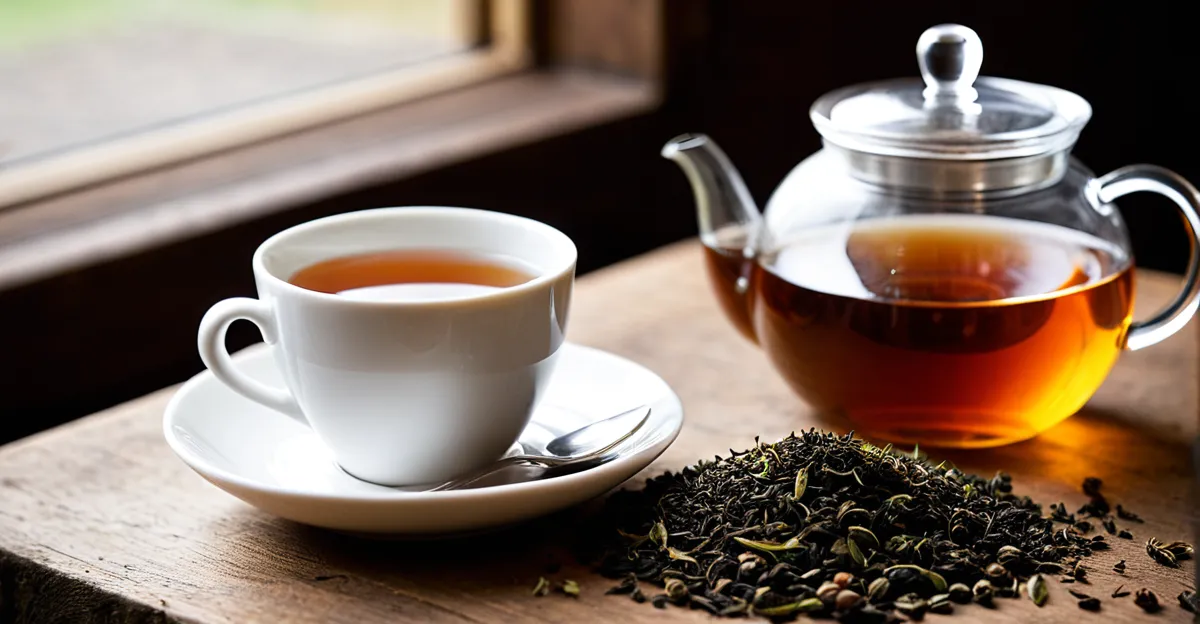Essential Steps for Brewing Authentic British Tea
Embark on a journey through the fundamental art of British tea brewing.
Achieving an authentic British tea experience begins with mastering the tea making essentials. Fundamentally, the choice between loose-leaf tea and tea bags shapes the flavor and quality of your brew. Loose-leaf tea, often preferred by connoisseurs, offers a richer taste and more control over the strength. Tea bags provide convenience but may compromise the depth of flavor. Selecting the right form depends on your taste preference and brewing style.
Also read : What are the secrets to crafting an authentic Lancashire hotpot?
Equally crucial is the selection of the teapot and utensils. A traditional ceramic or porcelain teapot is ideal for maintaining heat evenly, essential for the delicate extraction of flavors in British tea brewing. The teapot’s size and shape influence how the tea leaves or bags unfurl and release their aroma.
Water temperature plays a pivotal role, especially for black tea varieties commonly used in British tea brewing. The water should be freshly boiled and allowed to cool slightly before pouring—typically around 95°C (203°F) is optimal. Pouring boiling water directly onto the leaves or bags can scorch them, leading to a bitter taste. Maintaining the correct temperature ensures the tea releases its full-bodied flavor without unpleasant sharpness.
Also to discover : How do you achieve the ideal texture for a creamy bread and butter pudding?
By following this step-by-step guide—selecting quality tea, the right teapot, and controlling water temperature—you lay a strong foundation for crafting an authentic British tea that honors tradition and delivers satisfying flavor.
Key Factors for the Perfect Brew
Delving into the crucial elements that elevate tea brewing techniques.
Achieving optimal tea brewing begins with using high-quality, fresh water. Fresh water contains more dissolved oxygen, which enhances the extraction of flavors during the brewing process. Using stale or previously boiled water can result in flat-tasting tea. For authentic British tea temperature, water should be freshly drawn from the tap and brought to a boil each time you brew.
Another critical factor is the correct brewing time. Classic British teas, primarily black teas like Assam or English Breakfast, generally require steeping for 3 to 5 minutes. Steeping too briefly yields a weak brew lacking richness, while oversteeping causes bitterness. The step-by-step guide to timing involves starting a timer immediately after pouring hot water over the tea leaves or bags and removing them promptly at the recommended duration.
Preventing bitterness or weak flavour depends largely on controlling water temperature and steeping time together. Water at around 95°C (203°F) extracts robust flavors without burning the leaves, and limiting infusion time avoids excessive tannin release, which causes bitterness. Adjusting these variables allows you to customize your brew strength to personal preference, ensuring a consistently enjoyable cup aligned with traditional British brewing standards.
Adding Milk and Sugar: Tradition and Technique
Balance and timing in British tea make all the difference.
In British tea milk and sugar practice, the timing of adding milk profoundly influences the cup’s texture and flavor. The most traditional approach, favored by many connoisseurs, is to pour the strong brewed tea first, then add milk carefully. This sequence allows precise control over the color and creaminess, ensuring the milk does not curdle due to excessive heat. The alternative “milk first” method has historical roots, often linked to preserving fine china from cracking but can lead to a less consistent taste if not carefully measured.
Finding the perfect tea ratios between milk and sugar shapes the tea drinking tradition’s essence. Adding too much sugar can overpower the tea’s subtle flavors, while too little may leave the taste flat. Sugar alternatives like honey or agave syrup are becoming popular for those seeking different flavor profiles or a healthier option. A recommended step-by-step guide is to start with a small amount of sugar, taste the tea, then adjust gradually to achieve a balanced sweetness without drowning the tea’s natural notes.
Understanding these nuances enriches the British tea experience, bridging tea drinking tradition with personal preference. Whether steeped in conventional methods or adapted for modern tastes, mastering milk and sugar balance is key to crafting that quintessential cup cherished in British households.
British Tea Serving Etiquette
Refining the art of presenting your brew with grace and tradition.
Understanding proper tea etiquette is essential to honor the British tea tradition and to make your guests feel genuinely valued. The ritual begins with serving the tea before any additions such as milk or sugar are offered, allowing each person to customize their cup according to personal preference. Cups should be presented with the handle facing the guest’s dominant hand, emphasizing attention to detail.
Typical tea serving customs include pairing the tea with traditional accompaniments such as finger sandwiches, scones with clotted cream and jam, or light pastries. These snacks complement the robust flavours of classic British teas and enhance the overall tea experience. Serving snacks on a tiered cake stand not only adds elegance but also adheres to long-standing presentation practices.
Ideal settings for British tea revolve around calm, cozy spaces conducive to conversation and relaxation. Afternoon remains the customary time for tea, often between 3 and 5 pm, providing a pleasant pause in the day. Observing these aspects of tea etiquette preserves the cultural richness of the British tea ceremony and elevates the simple act of drinking tea into an esteemed social occasion.
Common Mistakes and How to Avoid Them
Frequent pitfalls exposed with precise solutions for flawless tea brewing.
One of the most common tea brewing mistakes is using water that is either not fresh or not hot enough. Fresh water is packed with oxygen, which amplifies tea flavors, while reused or cold water results in a dull, lifeless cup. Experts recommend boiling fresh water each time for optimal tea brewing, ensuring the correct British tea temperature, approximately 95°C (203°F), to extract the full spectrum of flavors without bitterness.
Another frequent error is oversteeping or understeeping the tea. Classic British teas like Assam or English Breakfast require a careful step-by-step guide to timing—3 to 5 minutes steeping is ideal. Oversteeping releases too many tannins, causing a harsh, bitter taste, while understeeping produces weak tea lacking body. Using a timer can help avoid these pitfalls and improve consistency.
Incorrect use of milk and sugar also contributes to British tea errors. Adding milk too early or in excessive amounts can mute flavors or cause curdling. Gradual addition following traditional sequencing is key. Additionally, neglecting to measure sugar or its alternatives leads to imbalance, overpowering or dulling the tea’s natural notes. Mastering these nuances ensures that every cup respects the tea making essentials while satisfying individual preferences.
Simple tips to improve your technique include always warming the teapot beforehand to maintain temperature, stirring gently to blend milk and sugar evenly, and using loose-leaf tea for a fuller taste experience. Following expert guidance and avoiding these common brewing errors guarantees a consistently perfect cup that honors authentic British tea craftsmanship.





